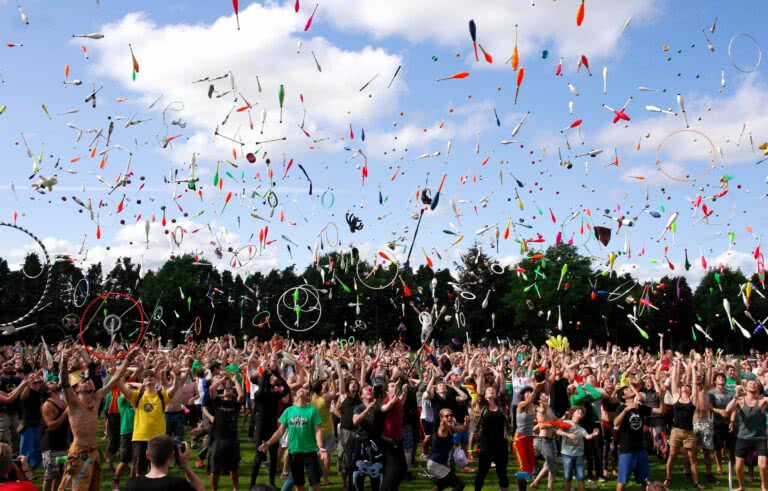Establishing a genuine connection with attendees and creating a safe space where people can pursue their passions has never been more important to event organisers, as our Event Trends Report 2020 reveals. Here’s why building a community is crucial.
Catering to niche interests, championing inclusivity and diversity, and promoting a local focus – with these kinds of ambitions in their sights, it’s no wonder 53% of creators said they will be planning events to help build a community in 2020, compared to 42% in 2019. Benefitting both attendees and organisers, here are four reasons why it pays to approach this year with a community-driven focus.
1. Accessing a ready-made audience
When we talk about community, you might think about a local event – whether that’s aimed at raising funds for a worthy cause, bringing about positive change in your area, celebrating something special, or simply getting to know your neighbours. Communities can be national or even global, both IRL and online, and they can offer the kind of connections people crave. Sports clubs provide a sense of community for those left unfulfilled by gyms. As Liam Clohessy, a teacher with a PhD in Physical Education explains: “The majority of people want something that they can go to, that they can enjoy, a place where they can meet up with people, either their friends or new people.”
A focus on wellness has surged in recent years, and any event that helps create a community can have a positive impact on people’s wellbeing. In this year’s survey, respondents acknowledged the rise of a back-to-basics approach, with “people actively trying to re-engage with their hobbies amid this social media peak.”
2. Engaging with attendees
Spotted a gap in the current events offering? Want to give like-minded people a reason to get together on a regular basis? Ed Coleman, Director of the Rediscovery Centre in Ballymun, describes how hosting events at the centre is a vital way to connect to people: “We make sustainability creative and fun, and we create events that inspire people to continue making positive changes in their lives.”
The Event Trends Report 2020 shows that, for 82% of event planners, overall attendance rates are the biggest indicator of how well an event went. When you are catering to a specific audience or set of interests, you have the opportunity to tap into a highly engaged and responsive audience. These are attendees who will join the conversation on social media, share word-of-mouth recommendations, and become repeat customers.
3. Championing a ‘come one, come all’ philosophy
As well as catering to a particular set of interests, growing a community also means championing inclusivity and diversity. And for Bami Kuteyi, creator of Bam Bam Boogie dance fitness, that means creating a place where everyone is free to be themselves. “I want to make sure that the people in the room feel connected and understand it’s a safe space where they can be whoever they want to be – regardless of what might be going on in their life,” she says.
4. Securing advance ticket sales
Growing a community means commanding audience loyalty, which makes it much easier to gather feedback, plan future schedules, and create more accurate budget forecasts based on predicted ticket sales. With 80% of respondents identifying ticket sales as the most common source of revenue, it’s important to dig deep into understanding people’s needs and what has resonated in the past to ensure they book again. Successful creators look beyond great attendance rates to gather qualitative responses and find out how their social media posts performed for a more holistic view of how their events are performing.
As Louise Tangney, founder of Vantastival, told us: “I think our willingness to listen to what people want, to take on board ideas and suggestions as to how the festival should be run, and to allow people to have their own input into the event is what has built this community.”
Find out more about what UK and Irish creators have planned for their community-driven events in 2020. You can also discover the predictions, challenges and opportunities identified by our survey respondents for the year ahead. Download the full Event Trends Report now.





